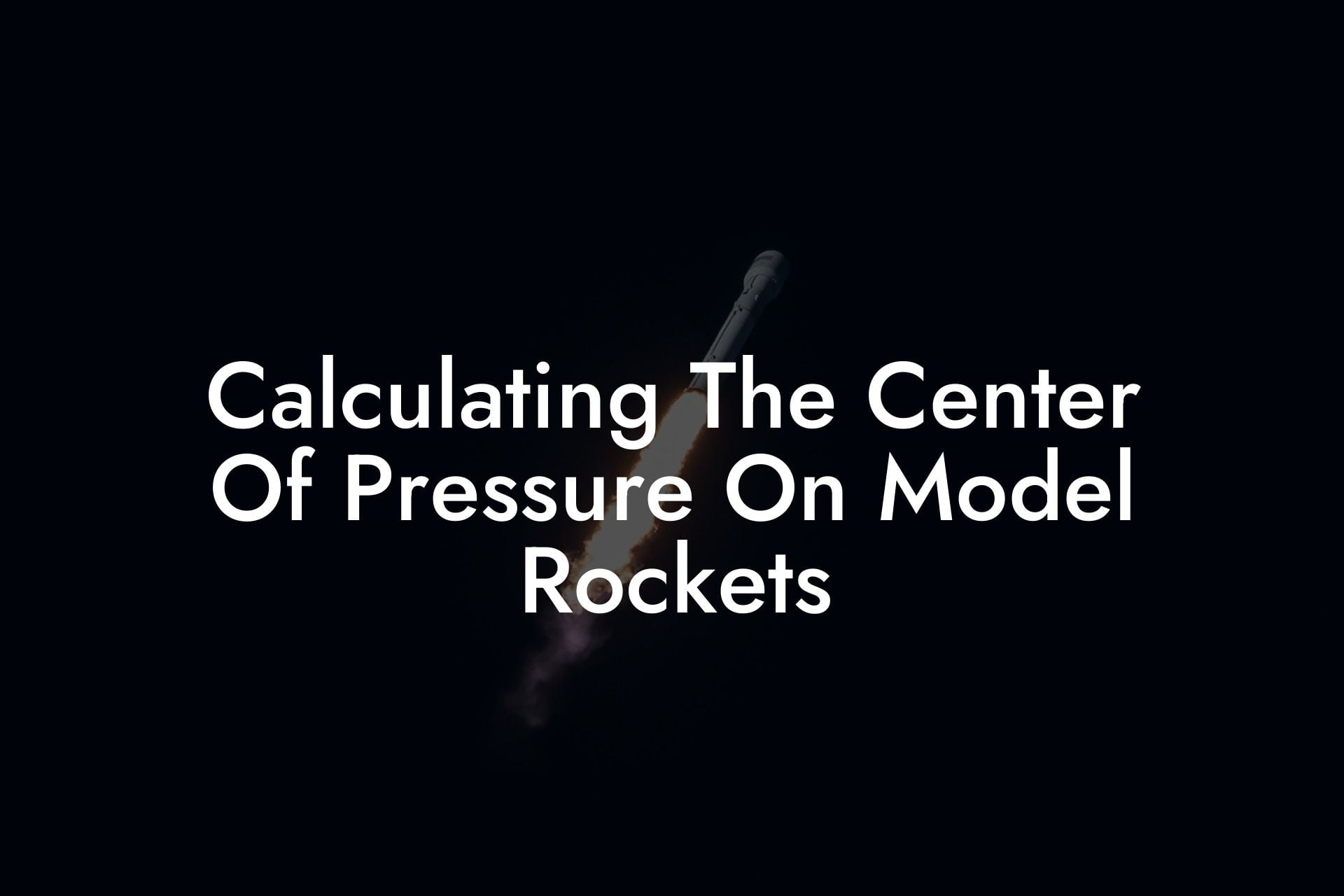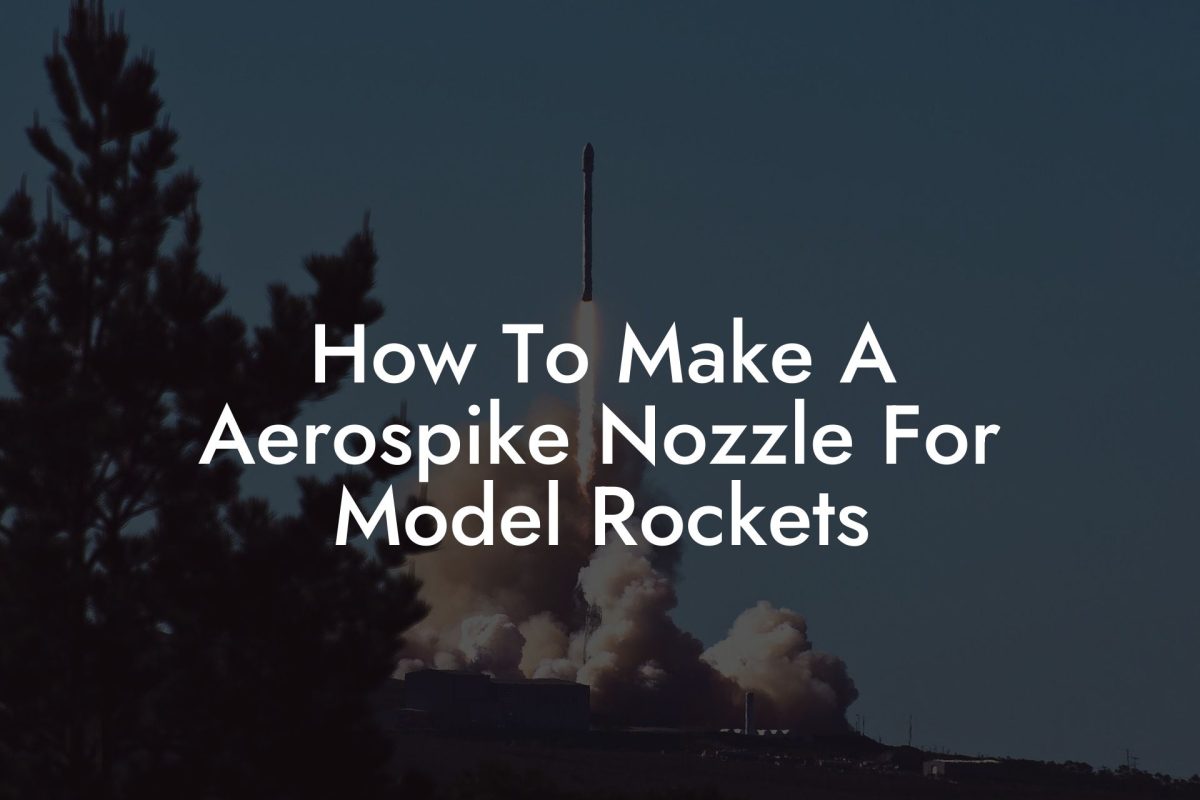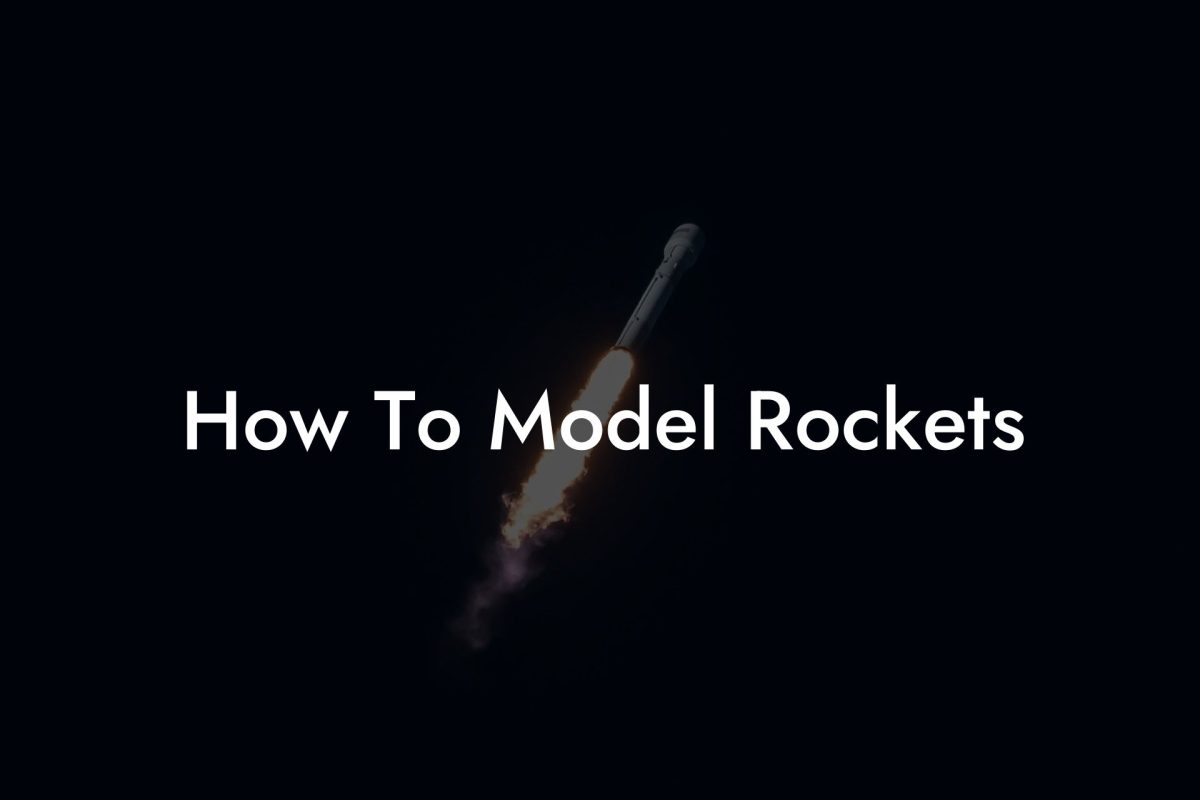Imagine soaring to new heights with your model rocket, its trajectory precise and controlled. But have you ever wondered what makes it possible for your rocket to defy gravity and reach such incredible speeds? The answer lies in the center of pressure, a critical factor that determines the stability and performance of your model rocket. In this comprehensive guide, we'll delve into the world of aerodynamics and explore the art of calculating the center of pressure on model rockets.
Quick Links to Useful Sections
- What is the Center of Pressure?
- Factors Affecting the Center of Pressure
- Methods for Calculating the Center of Pressure
- Simple Estimate Method
- Barrowman Method
- Computational Fluid Dynamics (CFD)
- Practical Applications of Center of Pressure Calculation
- Resources and community Support: Your Next Steps
- Frequently Asked Questions
What is the Center of Pressure?
The center of pressure is the point on an object where the force of air resistance, or drag, is concentrated. In the context of model rockets, it's the point where the aerodynamic forces acting on the rocket are balanced. Calculating the center of pressure is crucial because it affects the rocket's stability, flight trajectory, and overall performance.
When the center of pressure is correctly positioned, the rocket will fly smoothly and maintain its course. However, if the center of pressure is off, the rocket may wobble, spin out of control, or even crash.
Factors Affecting the Center of Pressure
Several factors influence the center of pressure on a model rocket, including:
- Rocket shape and design: The shape and design of the rocket, including its nose cone, body tube, and fins, affect the distribution of air pressure around the rocket.
- Fins and their placement: The size, shape, and placement of fins on the rocket influence the center of pressure, as they create areas of high and low pressure.
- Air density and velocity: The density of the air and the speed at which the rocket travels also impact the center of pressure.
- Angle of attack: The angle at which the rocket meets the oncoming air stream affects the center of pressure, as it changes the distribution of air pressure around the rocket.
Methods for Calculating the Center of Pressure
There are several methods to calculate the center of pressure on a model rocket, ranging from simple estimates to complex simulations. Here are a few approaches:
Looking For The Best Model Rocket Kits? You'll Love These:
Simple Estimate Method
This method involves estimating the center of pressure based on the rocket's shape and design. By dividing the rocket into sections and calculating the area of each section, you can approximate the center of pressure.
Barrowman Method
The Barrowman method is a more accurate approach that takes into account the rocket's shape, fins, and air density. This method involves calculating the center of pressure using a series of formulas and charts.
Computational Fluid Dynamics (CFD)
CFD is a sophisticated method that uses computer simulations to model the airflow around the rocket and calculate the center of pressure. This approach provides highly accurate results but requires specialized software and expertise.
Practical Applications of Center of Pressure Calculation
Calculating the center of pressure has several practical applications in model rocketry, including:
- Design optimization: By calculating the center of pressure, you can optimize your rocket's design for better stability and performance.
- Flight prediction: Knowing the center of pressure helps you predict the rocket's flight trajectory and make adjustments for better accuracy.
- Troubleshooting: If your rocket is experiencing stability issues, calculating the center of pressure can help you identify the root cause and make necessary adjustments.
Resources and community Support: Your Next Steps
Now that you've learned about the importance of calculating the center of pressure on model rockets, it's time to take your skills to the next level. Here are some resources and community support options to help you on your journey:
- Online forums and communities: Join online forums and communities dedicated to model rocketry, such as the National Association of Rocketry or the Model Rocketry subreddit, to connect with other enthusiasts and learn from their experiences.
- Tutorials and guides: Explore online tutorials and guides, such as those provided by Apogee Components or the Rocketry Center, to learn more about calculating the center of pressure and optimizing your rocket's design.
- Software and tools: Utilize software and tools, such as OpenRocket or RocketSim, to simulate and analyze your rocket's flight and calculate the center of pressure.
Frequently Asked Questions
Here are some frequently asked questions about calculating the center of pressure on model rockets:
1. Why is the center of pressure important in model rocketry?
The center of pressure is crucial because it affects the rocket's stability, flight trajectory, and overall performance.
2. How do I calculate the center of pressure on my model rocket?
You can use simple estimate methods, the Barrowman method, or computational fluid dynamics (CFD) to calculate the center of pressure, depending on your level of expertise and resources.
3. What are the consequences of an incorrect center of pressure calculation?
An incorrect center of pressure calculation can lead to stability issues, poor flight performance, and even crashes.
4. How can I optimize my rocket's design for better stability and performance?
By calculating the center of pressure and adjusting your rocket's design accordingly, you can optimize its stability and performance.
Looking For The Best Model Rocket Kits? You'll Love These:
Useful Interruption: Dive deeper into the world of Model Rockets with our most popular sections. If there is anything you think is missing or anything you would love for us to write about, just give us a shout.
- Getting Started & Basics With Model Rockets
- Model Rocket Design, Build & Customization
- Model Rocket Propulsion & Engine Technology
- Model Rocket Launch Techniques & Recovery
- Model Rocket Advanced Rocketry & Innovations
- Model Rocket DIY and Customization
- Model Rocket Equipment Reviews & Digital Tools
- Community, Competitions & Education
- Model Rocket Troubleshooting & FAQs
- Model Rocket Bonus/Seasonal & Niche Topics
A group of model rocket enthusiasts gathered at a field for their weekly launch event. Among them was Dave, a seasoned builder known for pushing the limits of hobby rocketry. This time, he had outdone himself.
“Ladies and gentlemen,” Dave announced, dramatically pulling a cloth off his latest creation, “I present to you: The Kraken!”
The crowd gasped. This wasn’t just a model rocket—it was a monster. The thing stood 8 feet tall, had six clustered engines, and was covered in enough duct tape to qualify as a classified aerospace project.
“Dave,” muttered Steve, the cautious safety officer, “Have you, uh… done the math on this?”
“Math?” Dave scoffed. “I built it in my garage at 3 a.m. with parts from eBay. This is an art piece, Steve.”
The countdown began.
5…
4…
3…
2…
1…
The engines ignited with a BOOM, and The Kraken shot up… kind of. It immediately did a violent barrel roll, narrowly missing the spectators before skyrocketing at an angle that could only be described as “legally questionable.”
The crowd collectively ducked as The Kraken flew straight over the adjacent cornfield, where Old Man Jenkins, the grumpiest farmer in town, was minding his business.
KABOOM!
The rocket disappeared behind the barn. A moment later, a flaming piece of Estes igniter wire landed at Steve’s feet. The silence was deafening.
And then—an unmistakable sound echoed across the field.
Jenkins’ shotgun being cocked.
“DAVE!!!” Steve shouted. “RUN.”
And that was the day Dave invented the first-ever biologically powered rocket booster: pure adrenaline.
To this day, nobody knows where The Kraken landed, but legend has it, it still haunts the skies, terrifying unsuspecting drones and low-flying birds.















